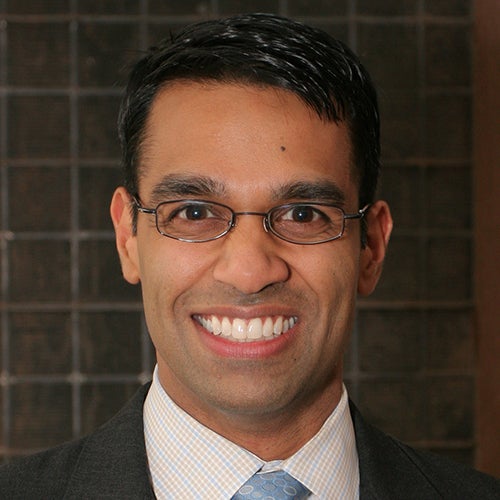Rajiv Vinnakota is the first executive vice president of a new division at the Aspen Institute focused on engaging youth. We asked him about this new initiative and for his thoughts on other exciting youth-focused Institute projects across the country.
What sparked the creation of the Youth & Engagement division at the Institute?
The vision comes from [Aspen Institute President and CEO] Walter Isaacson and the Board of Trustees, who decided that the Aspen Institute needs to be more engaged — beyond the high level policy work that we already do — in working directly with youth in a systematic and measurable way. This division will aim to take all that’s great at the Institute and then figure out ways in which it can extend those programs to serve youth, integrate the youth voice into the existing portfolio, and make some major bets on how to impact the direction of youth in society in a way that affects social policy and scale. I was lucky enough to be approached by Walter about taking this 100,000-foot vision, refining it, defining how we would grow it successfully, and also jump-starting pilot programs to get us working with youth as soon as we possibly can.
In your view, what are a few of the biggest challenges facing young people in America today?
I think that trying to generalize about youth can get you in trouble. Rather, I would suggest that our approach should be to think about the needs of youth in much more discrete ways — the needs of youth who come from highly impoverished urban core communities differ from the needs of my daughter, who attends an excellent public school and is spoiled beyond belief. However, they both have needs that could be met through programs and partnerships in which the Institute can engage. The same can be said for other demographics.
Having said that, I think there are certain needs that are constant and almost timeless — opportunities to learn; to develop deep and sustained relationships with adult role models; to have access to a safe community, healthy food, and other basic needs; to know that they can build a life that meets those needs as well as challenge their minds, their hearts, and their bodies; to be able to ask “why” about all of the wonders around them and get 10 different answers; and, to do all of this while living in a “macro” situation that provides hope and opportunities for stability and growth.
The mechanisms by which we are able to help each youth fulfill these needs end up being the responsibility of society at large, and now through our division, the Institute is going to play a significant role to make it happen for a sizeable portion of our population.
What is one success story of youth leadership you have encountered that has inspired you and exemplifies the work you will be doing at the Institute?
There are many examples, but I’ll point out two: one is my personal experience with the students at the SEED Schools, the college-prep boarding school network that I helped to co-found. On a daily basis, we are able to see the value of the “gift of time” provided by adults to the students. The outcomes of this gift are graduates who are ready to tackle the world and take on the challenges that they will face in college, in careers, and in life.
The other example is watching the work of the Aspen Challenge, which also instills a sense of possibility in students, and then matches that with mechanisms for the participants to think about what they can achieve through their schools.
Your division will continue to develop existing youth-focused programs like the Aspen Challenge, Teen Socrates, and AspenX. What other types of initiatives can we expect to come out of this exciting new department?
The next few months of work are focused on answering this question. I have many ideas, our Institute colleagues have great ideas, and I’m scheduled to speak and strategize with many leaders in the field. I’m looking forward to engaging with all of them so that we can define which initiatives we will take on immediately, and which we will consider undertaking in the next 18 months. It’s exciting!


